
Windows: DEMO_XY.exe 10 Linux: ./DEMO_XY.run 10
Each pixel of picture represents one mesh node.
white colour - vacuum red colour - left electrode (U = -1.0 [V]) green colour - right electrode (U = +1.0 [V]) blue colour - diaphragm (bottom) (U = +0.3 [V]) yelow colour - diaphragm (up) (U = +1.0 [V])

rozmiar siatki numerycznej: number of rows == 401 number of columns == 401 x_min == -200.0 [mm] x_max == +200.0 [mm] y_min == -200.0 [mm] y_max == +200.0 [mm] mesh step: h == 1.0 [mm] number of iterations >>> SUCCESS - solution V(x,y) has been found after 67781 iterations electrode 1 (red) consists of 3 rectangles: A1, A2, A3 line thickness: == 9 mesh steps\ boundary == +1 voltage == -1.0 [V] A1 i_row == 1 .. 401 i_col == 1 .. 10 A2 i_row == 1 .. 10 i_col == 11 .. 190 A3 i_row == 392 .. 401 i_col == 11 .. 190 electrode 2 (right) consists of 3 rectangles: B1, B2, B3 line thickness == 9 mesh steps boundary == +2 voltage == +1.0 [V] B1 i_row == 1 .. 401 i_col == 392 .. 401 B2 i_row == 212 .. 391 i_col == 1 .. 10 B3 i_row == 212 .. 391 i_col == 391 .. 401 electrode 3 (blue) line thickness == 20 mesh steps boundary == +3 voltage == +0.3 [V] i_row == 191 .. 211 i_col == 1 .. 151 electrode 4 (yellow) line thickness == 20 mesh steps boundary == +4 voltage == +1.0 [V] i_row == 191 .. 211 i_col == 251 .. 401 computation accuracy: eps == 1.0E-9 [V]
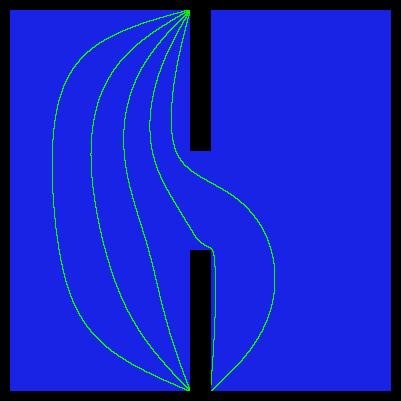

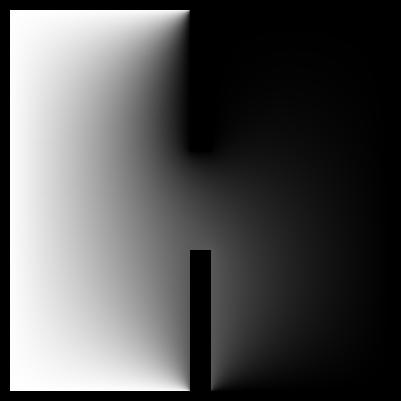
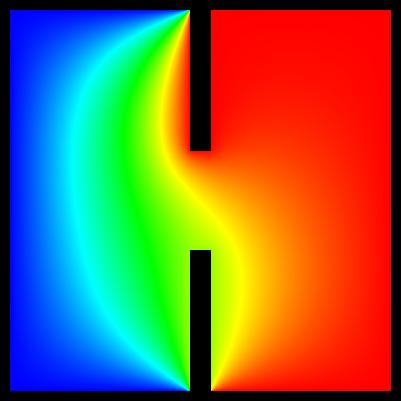
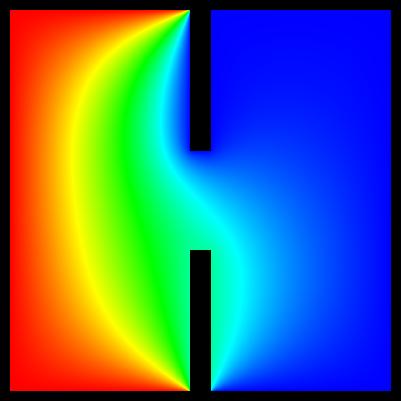
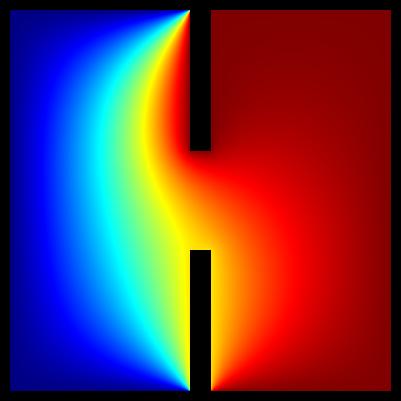
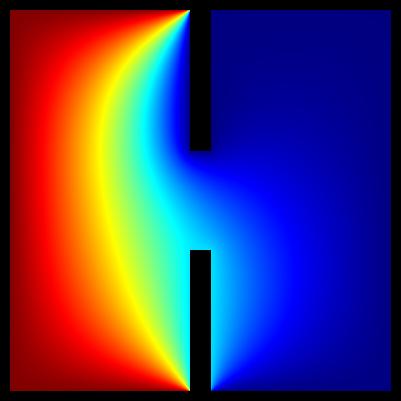
Important: determinig of exact values of E near electrode surface is generally problematic. These maps have generally illustrative character.






Important: determinig of exact values of E near electrode surface is generally problematic. These maps have generally illustrative character.






algorihm of computation: E = sqrt(E_x*E_x + E_y*E_y)
Important: determinig of exact values of E near electrode surface is generally problematic. These maps have generally illustrative character.





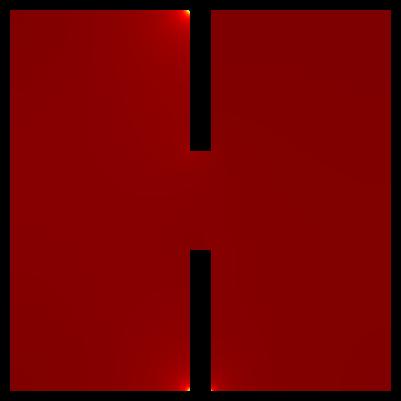
algorithm of computation: E*E = E_x*E_x + E_y*E_y
Important: determinig of exact values of E near electrode surface is generally problematic. These maps have generally illustrative character.





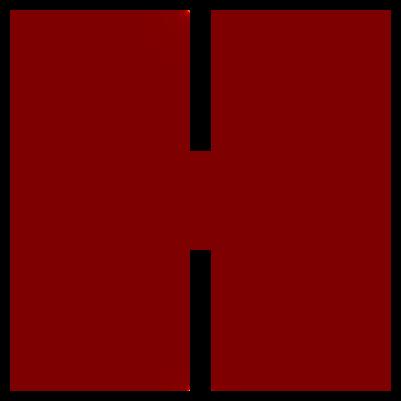
This static site does not use any cookies or gather any data.